The Department of Pediatrics continued its rapid growth throughout the remainder of the years that Dr. Robert Fiser served as Chairman of the Department of Pediatrics (DOP) from 1981-1994. These years saw a burgeoning number of pediatric faculty and residents along with an increasing array of important clinical and research programs. During these years, ACH continued to grow to keep pace with the clinical, educational, and research programs of the Department of Pediatrics faculty, along with UAMS faculty from other clinical departments. Dr. Fiser resigned in 1994. The programs described below that were initiated during these years, the new faculty recruited that developed these programs, and the many residents who worked under Dr. Fiser and the faculty during these years set in motion the growth that would continue for several decades.
The Environment
Politics
Bill Clinton’s term as governor began in 1979, and his impact on the DOP and ACH continued through most of the years 1981 – 1994. He and his wife, Hillary Rodham Clinton, were important players in the growth of ACH and the Department of Pediatrics. Gov. Clinton influenced the decisions that facilitated the growth of the neonatal intensive care unit, as described earlier. Hillary Clinton was a member of the board at ACH for many years, and she played a very important role in obtaining the bond issue in 1981 which allowed the hospital to borrow money at a more reasonable rate of interest. This was seen as a critical event for the future expansion of the hospital. Mrs. Clinton continued to have a significant focus on children’s health issues throughout the remainder of her political career. Bill Clinton continued to influence ACH after he was elected President of the United States in 1992. He and Senator Dale Bumpers played background roles that resulted in the funding of the Arkansas Children’s Nutrition Center by the USDA in 1994, funding of the Delta Nutrition Research Initiative by the USDA in 1995, and funding by the CDC of the Arkansas Center for Birth Defects Research and Prevention in 1998.
UAMS
Dr. Harry Ward served as Chancellor of UAMS from 1997-2000. Dr. Tom Bruce served as Dean of the UAMS School of Medicine from 1974 – 1985. He oversaw and worked with Dr. Fiser as he grew the Department of Pediatrics and its programs in the first decade of his tenure as chairman. Dr. I. Dodd Wilson served as Dean of the College of Medicine from 1986 – 2000. Like Dr. Bruce before him, Dr. Wilson did much to support Dr. Fiser’s visionary and aggressive program growth.

Department of Pediatrics
The DOP continued its rapid growth during the remainder of Dr. Fiser’s chairmanship to 1994. In 1985 there were approximately 50 faculty members and 36 residents, and by 1994 there were approximately 98 faculty, 52 pediatric residents, and 14 medicine-pediatric residents. But the fun of learning and working together continued. The DOP had an annual Christmas party as well as the annual end-of-the-academic-year picnic at the Maumelle Country Club. Perhaps the best example of the fun during those years was the annual bus trip to New Orleans to attend the meeting of the Southern Society of Pediatric Research. At the time Dr. Fiser was interested in enhancing the research image of the department, and he encouraged the faculty to attend the research meeting. The DOP rented a bus and Dr. Russell Steele organized the trip which included music and liquid refreshments. This trip enhanced the camaraderie of the faculty during those years.
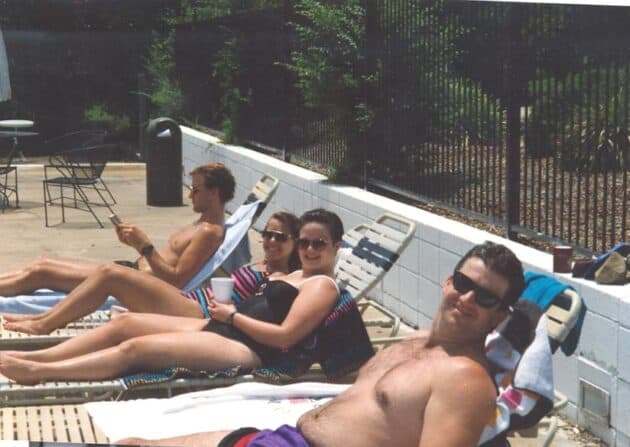
Arkansas Children’s Hospital
Leland McGinness served as CEO of ACH for 11 years, from 1972 – 1983. Randall O’Donnell was appointed Chief Operating Officer in 1980 and he was then CEO in 1983. These two hospital leaders worked closely with Dr. Robert Fiser and Dr. Betty Lowe, the ACH Medical Director, and provided leadership at ACH through the ongoing years of rapid growth. The first significant expansion of ACH, called the South Wing, opened in September 1979. At that time, the total number of hospital beds was 126. The new East Wing opened in February 1982, with 4 units: 3-blue dedicated to surgery, 3-green focused on general medicine, 3-gold dedicated to hematology/oncology, and 3-orange focused on orthopedics. By this time the ACH bed capacity had grown to 189, including 20 NICU bassinets. Two more floors, the fourth and fifth floors, were added in the late 1980s, and by 1991-1992 ACH operated 268 hospital beds. In 1991, following Dr. Robert Fiser’s vision of expanding the research capacity in the Department of Pediatrics and ACH, the leadership of both UAMS and ACH signed a cooperative agreement to develop the Arkansas Children’s Hospital Research Institute. Randall O’Donnell resigned in the fall of 1992 and Dr. Jonathan Bates was named CEO of ACH in May 1993.
Bursting at the Seams
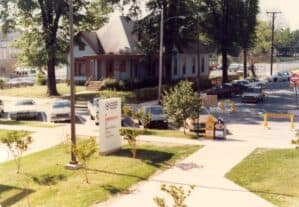
There was limited available space to house faculty in the early years. As noted earlier, Dr. Fiser moved from UAMS to the ACH campus in 1977 into what was known as the “Blue House.” Across the street, several faculty members resided in the “White House”. The hospital began to buy houses in the blocks contiguous to the hospital, and ultimately they brought in several trailers for office space for faculty in 1981. Office space for faculty continued as a major challenge for the Department of Pediatrics and ACH until the opening of the Roy and Christine Sturgis Educational building in 1987, located contiguous to the hospital. The majority of the DOP faculty moved to the 3rd and 4th floor of the Sturgis at that time.
Programs
UAMS Clinical and Administrative Enterprises
Several administrative and clinical programs were developed under the umbrella of UAMS during the years 1981–1994. At the request of UAMS faculty working at ACH, and with the support of Dean Thomas Bruce, a decision was made that these physicians should have their own billing group. The Children’s University Medical Group (CUMG) opened for business in February 1983 under the leadership of Gayle Fiser and Alicia Quinn. That group operated in the black from its inception and served UAMS physicians working at ACH extremely well. During these years, Dr. Fiser worked closely with some of the senior leaders of the Arkansas legislature and AR Medicaid and developed funding for several administrative structures which facilitated the growth of programs directed by the Department of Pediatrics. These included the Child Health and Family Life Institute (CHFLI) and the Child Health Management System (CHMS), which provided expanded Medicaid support for these programs.
The James L. Dennis Development Center (DDC; named for James L. Dennis, the retired Chancellor of UAMS who worked at the DDC for several years) became a UAMS program in the 1980s and continued with the enhanced financial support provided by CHMS. Multi-disciplinary team and individual medical evaluations were provided at the DDC for children with developmental delays, developmental disabilities, and behavior issues. In 1988, 1,893 multi-disciplinary evaluations and 3,039 individual patient contacts occurred at the DDC.
The KIDS First program, an early childhood educational/medical intervention program, began in 1990 with the support of CHFLI and CHMS. The program targeted preschool children with double vulnerability, both medical and social. This program grew from the lessons learned as the Department of Pediatrics served as a site for the multi-site Infant Health and Development program funded by the Robert Wood Johnson Foundation. The KIDS First program, directed by Dr. Patrick Casey, expanded during the 1990s from its original location in Little Rock to 11 sites around Arkansas, serving more than 700 preschool children on any given day.
Following Dr. Fiser’s vision of starting an applied research unit within the Department of Pediatrics, the Center for Applied Research and Evaluation (CARE) was founded in 1990 under the leadership of Dr. Patrick Casey. A multi-disciplinary faculty were recruited to this research unit and the faculty successfully competed for millions of dollars of research grant funding over the years. Faculty recruited in CARE during the 1990s included Drs. Kelly Kelleher, Paula Roberson, Bettye Caldwell, Charlotte Hobbs, James Robbins, Mary Aitken, Russell Kirby, J. Mick Tilford, Roscoe Dykman, and Perla Vargas.
ACH-UAMS Clinical Programs
The growth of new clinical and research programs developed by physicians of the Department of Pediatrics with ACH support was broad and varied. The following describes some of these programs.
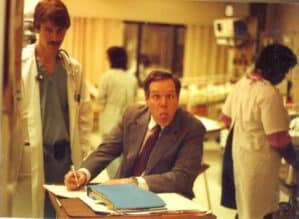
Dr. Watson Arnold, the first pediatric nephrologist in Arkansas, directed the first pediatric dialysis treatment in 1978. Under his leadership, followed by Dr. Eileen Ellis in 1990, the number of dialysis treatments grew exponentially. From 1993 – 2018, 15,254 hemodialysis procedures were performed along with 13,057 peritoneal dialysis treatments. The first pediatric renal transplant at ACH occurred in 1987, and by 2018, 227 renal transplants had been performed at ACH.
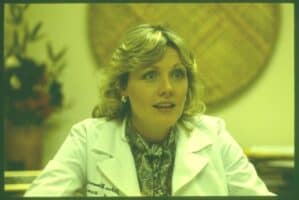
Dr. Debra Fiser joined the department faculty in 1981 as the first pediatric intensive care specialist, and she opened the first real intensive care unit at ACH in 1981. Overseen by Dr. Robert Arrington, the first-generation air transport occurred in 1983 with a fixed-wing twin-engine airplane. This aircraft was used primarily to transport preterm newborn infants, but it was also used to transport older children who were too unstable to transport on the ground. The first helicopter, named Angel One, began transport services in 1985.
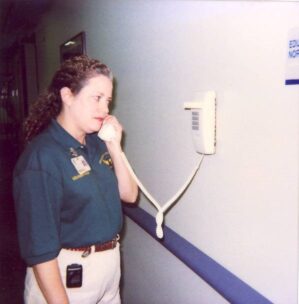
Under the leadership of a recently recruited intensivist, Dr. Michele Moss, this service continued to grow. Dr. Moss recalled:” It started as a ground transport system, mostly for neonates to bring sick premature babies or term babies with acute illness here to our NICU. And after a couple of years, once Debby Fiser was here, then it expanded to start bringing in pediatric-age children. But many of the population bases and where these kids are coming from are two and a half hours by ground from here so that was not ideal. So, I think it was ’86 or ’87, we got our first helicopter. It was a single-engine Bell Long Ranger. I forgot how long we had the Long Ranger, two or three years, and there was a problem during refueling on the helipad at the hospital and it caught fire. There are plenty of single-engine helicopters out there but we upped our game and bought what’s called a “BOLKOW.” It was a very small, very efficient helicopter but it had twin engines. But our mission is such that we needed a bigger helicopter with bigger internal space. Part of the driving force is that frequently we bring twins and we couldn’t bring twins on the Bolkow. We also started the ECMO transport program. We couldn’t put an ECMO circuit into the Bolkow, it wouldn’t fit. So, at that time, the hospital looked at their numbers and felt like we could justify a second helicopter. And so, we bought a Silorsky S-76, which is basically what we have now.”
The first bone marrow transplant occurred at ACH in 1981 under the supervision of Dr. Russell Steele. The cardiology group under Dr. J.B. Norton’s leadership continued to grow during these years. The first cardiovascular intensive care unit opened in 1983. The cardiologists cared for more than 250 heart surgeries that occurred that year. The Extra Corporeal Mechanical Oxygenation (ECMO) program was established in 1989 under the leadership of Dr. Bonnie Taylor of the neonatology group, and Dr. James Fasules, a cardiologist. Cardiology became the first section of the Department of Pediatrics to provide outpatient services in local communities, beginning in 1983 with clinics in Jonesboro and Fayetteville, and later expanding to Lake Village, Texarkana, Fort Smith, El Dorado and Mountain Home.
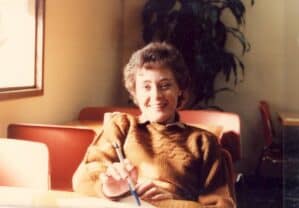
The Emergency Department at ACH and the Emergency Medicine Section of the Department of Pediatrics group grew significantly during these years. The first 24-hour emergency “room” opened in the fall of 1981, was expanded in 1984, and expanded again in 1987 due to the rapid increase in patient visits. In Stephen Handley’s history of ACH, Dr. Randall O’Donnell was quoted as saying that the original ER was designed for 5,000-6,000 visits per year, but by 1987 approximately 50,000 visits per year were expected to occur. Dr. Rhonda Dick, the long-time Medical Director of the ACH Emergency Department recalled: “Just prior to my becoming a resident at Children’s they didn’t even have an emergency department. They had a clinic that had kind of a walk-in until 11:00 o’clock and then it would shut down at night and anybody that pulled up got sent over to UAMS. The new emergency department was open all night and it had five rooms and it was covered by residents at night. We really didn’t see many kids, I remember when I was on call as a resident I would sleep from two to five and we may not have any patients at all. I ended up being down in the emergency department as one of the first people there strictly to be an attending physician supervising residents. So, at first, we just sort of covered weekdays and then Dr. Lowe said we are going to kind of separate the emergency department from the clinic. We need a Medical Director. And I said Okay. And then in 1988, we moved into an ED that had about 30 beds. It was really a real emergency department. During those first few years, part of what I did as the Medical Director, we tried to establish the ability to have 24-hour coverage by staff-level doctors. There weren’t enough of us to do it so we utilized a lot of moonlighting physicians, like other doctors at Children’s like hematology and cardiology doctors. Until around 1988 or 1989, we did get to where we could provide 24-hour physician coverage in the ED. And then over the next several years, our volume grew and we just got more physicians onboard…. And then as time went by and we got busier and busier and busier we had to expand the coverage like where we didn’t have only one attending physician in there at a time but we would need two for certain parts of the day because we were so busy, the volume was growing and growing and growing.”
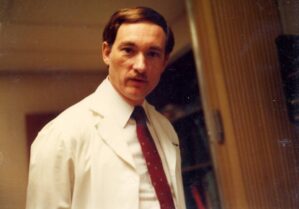
Dr. Jerry Jones initiated the program for children with suspected child abuse and neglect during the 1980s. He established protocols for evaluation in the emergency room and provided 24-hour coverage for inpatient evaluations seven days per week. He became an expert in providing court testimony and provided training to pediatric residents to provide testimony when subpoenaed to court. He established the Team for Children at Risk in 1986 and the Arkansas Children’s House for outpatient evaluations of children with suspected abuse and neglect in 1992. Dr. Karen Farst, who became Chief of the Children at Risk Section upon Dr. Jerry Jones’ retirement, recalled:” The faculty member that I was close to when I came back was Dr. Jerry Jones. He is the one that basically founded and created the child abuse program at Arkansas Children’s Hospital. He had basically kind of been a solo practitioner since the mid-80s taking call by himself and so he had some people help him part-time. He was really an amazing guy and a pioneer, a very quiet guy that people didn’t really know how impactful he was. He was kind of the first generation of faculty, even in the country, that really started the field of child abuse pediatrics. He was blazing all the paths and trails of what a child abuse program should look like. He was passionate about having the combination of both medical assessment and mental health services for kids who had been abused, especially kids who’d been sexually abused.
The Neuroscience Unit was established at ACH in 1990 to treat children with brain tumors, seizure disorders, and other neurological problems, under the leadership of Dr. Stephen Bates, then the Chief of Pediatric Neurology in the DOP.
The Schmeiding Developmental Center and the Schmeiding Kids First Program opened in Springdale in 1991 with support from the Schmieding Foundation of Springdale. These programs were initially located in Springdale in a trailer, and after several moves were located in a free-standing building adjacent to the hospital in Springdale. This Developmental Center and Kids First Program provided services like their sister programs located in Little Rock.
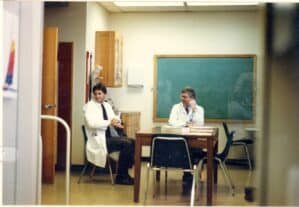
Other clinical sections in the Department of Pediatrics thrived during these years, including the following: hematology/oncology under the leadership of Dr. Daisilee Berry; pulmonary medicine under the leadership of Dr. Robert Warren; genetics under multiple leaders; allergy/immunology under the leadership of Dr. Wesley Burks; adolescent medicine under the leadership of Dr. Susan Jay; infectious diseases under the leadership of Dr. Terry Yamauchi, followed by Dr. Richard Jacobs; endocrinology under the leadership of Dr. Jocelyn Elders and later Dr. Steven Kemp.
ACH-UAMS Research Programs
Thomas Badger, Ph.D. was recruited by Dr. Robert Fiser in 1986. At that time the primary research facility used by DOP faculty included an outdated lab at Ft. Roots in North Little Rock, and a research lab established by Dr. Donald Hill on the ACH campus. Dr. Badger’s responsibility as Director of Research at ACH was to implement Dr. Fiser’s vision of enhancing NIH funding and the establishment on the ACH campus of a research institute and a National Human Nutrition Research Center focused on children. Dr. Badger recalled frequent visits with Dr. Fiser and Mr. Charles Whiteside and Ann Hickman, two senior ACH board members, as well as with Mrs. Hillary Clinton, as they sought support for the research institute. The Arkansas Children’s Hospital Research Institute (ACHRI) was housed in the old Baptist Hospital, which became ACH South Campus and opened in 1992 after extensive renovation. Dr. Badger received funding for two new NIH grants, and in 1994 Dr. Tom Wells received NIH funding for the Pediatrics Pharmacology Research Unit. Planning for the children’s nutrition research center continued, and in 1994 the Arkansas Children’s Nutrition Center was funded by the USDA.
Dr. Patrick Casey received funding from the Robert Wood Johnson Foundation to participate as a research site in the multisite national study Infant Health and Development Program. Partnered with sites at Harvard, Yale, University of Miami, University of Texas, University of Washington, Children’s Hospital of Philadelphia, and Albert Einstein University, this research was a randomized intervention to determine whether early education in the first three years of life targeting low birth weight preterm infants can enhance their developmental trajectories.
Faculty
Betty Lowe, M.D.

Betty Lowe, M.D. was perhaps the most esteemed of all Pediatric faculty during the Bob Fiser years. She was a dynamo whose intelligence and personality drove her to the highest level of Pediatric leadership in the country. But at heart, she was a clinician and teacher, and she excelled at both.
Dr. Lowe grew up in a small town in Arkansas and derived her focus on education from her parents, both of whom were teachers. She graduated from the University of Arkansas and then from UAMS in 1956, one of three women in her medical school class. After an internship at UAMS in Pediatrics, she moved to Boston and spent a few years in training at the Children’s Medical Center. In an oral history interview with the American Academy of Pediatrics, Dr. Lowe said,” Those were great years. Mary Ellen Avery was a fellow in Neonatology, and Jackie Noonan was a fellow in Cardiology. The teachers, of course, were just superb. You had Charles Janeway and Dr. Diamond, among many others.” She then returned to Arkansas. She said,” It never occurred to me to not come home.” After a chief resident year under Dr. Ted Panos at UAMS, she joined a group practice in Texarkana. In 1975 she returned to UAMS to become the Director of Medical Education at Arkansas Children’s Hospital. She said,” Had they offered me the job of Medical Director, which is what I became, I would never have come because I did not like that aspect of things.” In 1977 she became Medical Director of ACH, “because it became apparent in the early years that either we must have someone from the medical side deeply involved in hospital administration, or we would never get what we needed. It also became apparent to me that, well, this was a job perhaps I ought to try to do and see how it works out. I had in mind that I would do this for five or six years, and then I’d switch back.” But she never did, and she served as Medical Director during most of the years of incredible growth at ACH, until she retired.
From her earliest years at UAMS/ACH, Dr. Lowe developed a special interest in Rheumatology. She trained by visiting other centers in Houston and Memphis, and by attending Rheumatology focused meetings. She opened a weekly Rheumatology clinic at ACH, treating Juvenile Rheumatoid Arthritis (JRA) and related conditions. By 1981 she was following about 130 children with JRA.
During busy years of clinical and administrative duties, she rose to leadership roles in the American Academy of Pediatrics. She served as Chair of the Arkansas Chapter of the AAP from 1974-1977, District Chair of District VII from 1986-1992, Vice-President during 1992-1993, and served as the first female President of the AAP during 1993-1993.
Dr. Lowe was a unique and accomplished clinician, teacher, and administrative leader, and she played a prominent role in the growth of the UAMS Department of Pediatrics for several decades.
There were approximately 57 faculty in DOP in the academic year 1985 – 1986, 76 faculty members in the academic year 1990-1991, and approximately 98 faculty members in the academic year 1995 – 1996. There are too many individual faculty members to discuss during these years.

The following played important leadership roles in the Department of Pediatrics in the following years: Dr. Debra Fiser joined the DOP faculty in 1981. She served as Chief of the Critical Care section until 1995 when she became Chair of the DOP. She then served as Dean of the School of Medicine at UAMS from 2006 – 2013. Dr. Richard Jacobs became Chief of Infectious Diseases in 1983 and Chairman of the Department of Pediatrics from 2006 – 2017. Dr. Stephen Kemp joined the faculty in 1984 and served as Chief of Endocrinology for many years. Dr. Susan Jay joined the faculty in 1985 and served as the first Chief of Adolescent Medicine. Dr. David Becton joined the faculty in 1985 and is currently serving as Chief of Hematology-Oncology. Dr. Wesley Burks also joined the faculty in 1985 and later served as Chief of Allergy-Immunology; he later became Chief of Allergy-Immunology at Duke University, then Chairman of Pediatrics and ultimately the Dean of the School of Medicine at the University of North Carolina at Chapel Hill. Dr. Eileen Ellis joined the faculty in 1985 and she later served as the Chief of Pediatric Nephrology until 2016. Dr. Thomas Wells joined the faculty in 1987, was the Principal Investigator for the Pediatric Pharmacology Research program, and he later served as Vice Chair for Research in the DOP for many years. Dr. Michele Moss joined the faculty in 1985 and she later served as the Vice Chairman for Clinical Affairs. Dr. Charles Feild joined the faculty in 1988 and later served as the Chief of Community Pediatrics. Dr. Eldon Schulz joined the faculty in 1991 and later served as the chief of Developmental-Behavioral Pediatrics. Dr. Brian Hardin joined the faculty in 1992 and later became Chief of Adolescent Medicine. Dr. Greg Sharp joined the faculty in 1991 and later served as chief of Pediatric Neurology. Dr. Nick Long joined the faculty in 1989 and later served as the Chief of Pediatric Psychology for many years.

Residents
There were 37 residents in the class of 1980-1981. Several of the residents trained during those years ultimately joined the faculty of the Department of Pediatrics, including the following: Dr. Bonnie A, Taylor, who later became the Chief Medical Officer at ACH; Dr. David Becton, later the chief of Hematology-Oncology; Dr. Wesley Burks, later the chief of Allergy-Immunology; Dr. Billy Thomas, later the Vice Chancellor for Minority Affairs at UAMS; Dr. Charles Feild, later the chief of Community pediatrics; Dr. Bryan Burke; Dr. Tyra Henry, and Dr. Janet Udouj. By 1989-1990, there were 43 pediatric residents and 11 combined Medicine–Pediatric residents. Several of these ultimately joined the DOP faculty, including the following: Dr. Renee A. Bornemeier, who later became Vice Chairman for Faculty Affairs; Dr. Steve Schexnayder who became Chief of the Critical Care Medicine section and Vice Chairman for Education; Dr. Chris Smith who became Vice Chair for Education and Chairman of Pediatrics at Tulsa, Okla; Dr. Joe Thompson, who became Director of the Arkansas Center for Health Improvement; Dr. Robert Hopkins, who became the Chief of the Section of General Medicine in the Department of Medicine; Dr. Toni Darville, who later became an internationally recognized researcher in Infectious Diseases and Chief of Infectious Diseases and Vice-Chair for Research at the University of North Carolina at Chapel Hill; Dr. Hank Farrar, who later led the Pediatrics residency program for many years; Dr. Rob Lyle, who later became director of the ACH Neonatal Intensive Care Unit and Co-Medical Director of the complex care clinic; Dr. Paul Seib who later became Chief of Pediatric Cardiology; Dr. Joe Elser who late served as Chief of General Pediatrics; Dr. Malinda Webb; and Dr. Virginia “Digie” Melhorn.

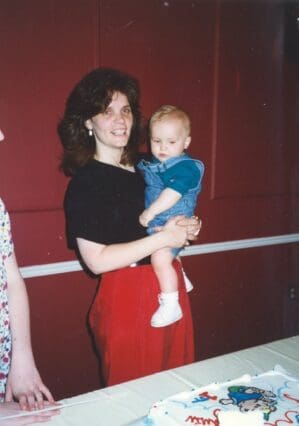
By 1993-1994, the last full year of Dr. Robert Fiser’s tenure as Chairman of the DOP, there were 52 pediatric residents and 14 combined medicine–pediatric residents. Future faculty members in this group included Dr. Charlotte Hobbs, who later became the Director of the Arkansas Center for Birth Defects Research and Prevention funded by the CDC; Dr. Elizabeth Frazier who later directed the nationally recognized heart transplant program at ACH, along with Tad Fiser and Shelly Baldwin.
